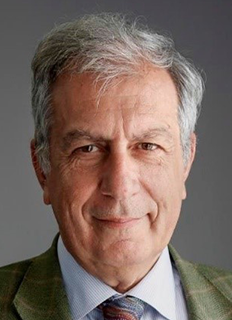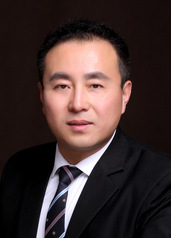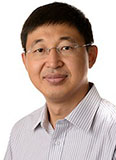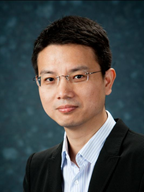
Invited Speakers
SPEAKERS |
Prof. Alberto Del Bimbo ACM Distinguished Scientist, Chair of ACM SIGMM, IAPR Fellow, University of Firenze, Italy | Alberto del Bimbo is Full Professor at the Department of Information Engineering of University of Firenze. He is the author of over 350 scientific papers in Computer Vision and Multimedia. He was Vice-Dean for Research and Technology Transfer, President of the Foundation for Research and Innovation and Director of MICC - Media Integration and Communication Center at University of Firenze. He is the Director of NEMECH the New Media for Cultural Heritage Center. He was the Program Chair of ICPR 2016, ICPR 2012, and ACM Multimedia 2008, and the General Chair of ICPR 2020, ICMR 2019, ECCV 2012, ICMR 2011, ACM Multimedia 2010, and IEEE ICMCS 1999. He is the Associate Editor of MTAP AND PAAA journals. He was Associate Editor of IEEE Transactions on Pattern Analysis and Machine Intelligence and IEEE Transactions on Multimedia. Prof. Del Bimbo is IAPR Fellow and the recipient of the 2016 ACM SIGMM Award for Outstanding Technical Contributions to Multimedia Computing, Communications and Applications. He is the Chair of ACM SIGMM Special Interest Group on Multimedia. |
Prof.Jianguo Ma IEEE Fellow, Zhejiang Lab, China | Jianguo Ma received the doctoral degree in engineering in 1996 from Duisburg University, Duisburg, Germany. He was a faculty member of Nanyang Technological University (NTU) of Singapore from Sept 1997 to Dec. 2005 after his post-doctoral fellowship with Dalhousie University of Canada in Apr 1996 – Sept 1997. He was with the University of Electronic Science and Technology of China in Jan 2006 – Oct 2009 and he served as the Dean for the School of Electronic Information Engineering and the founding director of the Qingdao Institute of Oceanic Engineering of Tianjin University in Oct. 2009 – Aug 2016; he joined Guangdong University of Technology as a distinguished professor in Sept 2016 – Aug 2021. Dr. Ma served as the Vice Dean for the School of Micro-Nano Electronics of Zhejiang University in Sept, 2021 – Oct 2022, Starting from 1 Nov 2022 he joins the Zhejiang Lab. His research interests are: Microwave Electronics; RFIC Applications to Wireless Infrastructures; Microwave and THz Microelectronic Systems; He served as the Associate Editor for IEEE Microwave and Wireless Components Letters in 2003 –2005; He was the member for IEEE University Program ad hoc Committee (2011~2013). Dr. Ma was the Member of the Editorial Board for Proceedings of IEEE in 2013-2018 He is Fellow of IEEE for the Leadership in Microwave Electronics and RFICs Applications Dr. Ma was serving as the Editor-in-Chief of IEEE Transactions on Microwave Theory and Techniques in 2020 –2022. |
Prof. Ruqiang Yan IEEE Fellow,Xi'an Jiaotong University/School of Mechanical Engineering | Ruqiang Yan is a Full Professor of the School of Mechanical Engineering, Xi’an Jiaotong University, China. His research interests include data analytics, AI, and energy-efficient sensing and sensor networks for the condition monitoring, fault diagnosis and prognosis of large-scale, complex, dynamical systems. Dr. Yan is a Fellow of IEEE (2022) and ASME (2019). His honors and awards include the IEEE Instrumentation and Measurement Society Technical Award in 2019 and multiple best paper awards. Dr. Yan is the Editor-in-Chief of the IEEE Transactions on Instrumentation and Measurement, an Associate Editor of the IEEE Sensors Journal, and Editorial Board Member of Chinese Journal of Mechanical Engineering and Journal of University of Science and Technology of China. |
Prof. Guangjie Han IEEE Fellow, IET/IEE Fellow、AAIA Fellow, Hohai University, China | Guangjie Han (Fellow, IEEE) is currently a Professor with the Department of Internet of Things Engineering, Hohai University, Changzhou, China. He received his Ph.D. degree from Northeastern University, Shenyang, China, in 2004. In February 2008, he finished his work as a Postdoctoral Researcher with the Department of Computer Science, Chonnam National University, Gwangju, Korea. From October 2010 to October 2011, he was a Visiting Research Scholar with Osaka University, Suita, Japan. From January 2017 to February 2017, he was a Visiting Professor with City University of Hong Kong, China. From July 2017 to July 2020, he was a Distinguished Professor with Dalian University of Technology, China. His current research interests include Internet of Things, Industrial Internet, Machine Learning and Artificial Intelligence, Mobile Computing, Security and Privacy. Dr. Han has over 500 peer-reviewed journal and conference papers, in addition to 160 granted and pending patents. Currently, his H-index is 60 and i10-index is 257 in Google Citation (Google Scholar). The total citation count of his papers raises above 13600+ times. Dr. Han is a Fellow of the UK Institution of Engineering and Technology (FIET). He has served on the Editorial Boards of up to 10 international journals, including the IEEE TII, IEEE TCCN, IEEE Systems, IEEE/CCA JAS, IEEE Network, etc. He has guest-edited several special issues in IEEE Journals and Magazines, including the IEEE JSAC, IEEE Communications, IEEE Wireless Communications, Computer Networks, etc. Dr. Han has also served as chair of organizing and technical committees in many international conferences. He has been awarded 2020 IEEE Systems Journal Annual Best Paper Award and the 2017-2019 IEEE ACCESS Outstanding Associate Editor Award. He is a Fellow of IEEE. |
Prof. Seifedine Kadry IET Fellow, IETE Fellow, IACSIT Fellow, Distinguish speaker of IEEE Computer Society, Noroff University College, Norway | Professor Seifedine Kadry has a Bachelor degree in 1999 from Lebanese University, MS degree in 2002 from Reims University (France) and EPFL (Lausanne), PhD in 2007 from Blaise Pascal University (France), HDR degree in 2017 from Rouen University. At present his research focuses on Data Science, education using technology, system prognostics, stochastic systems, and applied mathematics. He is an ABET program evaluator for computing, and ABET program evaluator for Engineering Tech. He is a Fellow of IET, Fellow of IETE, and Fellow of IACSIT. He is a distinguish speaker of IEEE Computer Society. |
Prof. Yonghui Li IEEE Fellow, University of Sydney, Australia | Yonghui Li is now a Professor and Director of Wireless Engineering Laboratory in School of Electrical and Information Engineering, University of Sydney. He is the recipient of theAustralian Research Council (ARC)Queen Elizabeth II Fellowship in 2008 andARC Future Fellowship in 2012. He is an IEEE Fellow for contributions to cooperative communications technologies. His current research interests are in the area of wireless communications, with a particular focus on IoT, machine to machine communicaitons, MIMO, millimeter wave communications, channel coding techniques, game theory, machine learning and signal processing. Li holds a number of patents granted and pending in these fields. Professor Li is an editor for IEEE transactions on communications, IEEE transactions on vehicular technology and guest editors for several special issues of IEEE journals, such as IEEE JSAC, IEEE IoT Journals, IEEE Communications Magazine. He has published one book, more than 160 papers in premier IEEE journals and more than 100 papers in premier IEEE conferences. His publications have been cited more than 18000 times, with an h-index of more than 68. Six of his papers have been included as ISI high cited papers by ESI Web of Science, defined as top 1% of papers in the field. Several of his papers have been the top most 10 most cited papers in the respective journals since the year it was published. He is the founder and director of IoT undergraduate major at the University of Sydney. |
Prof.Xiaojun Yuan University of Electronic Science and Technology of China, China | His research interests cover a broad range of signal processing, machine learning, and wireless communications, including but not limited to multi-antenna and cooperative communications, sparse and structured signal recovery, Bayesian approximate inference, network coding, etc. He has published over 130 peer-reviewed research papers in the leading international journals and conferences in the related areas. He has served on a number of technical programs for international conferences. He is an editor of the IEEE Transactions on Communications since 2017, and also an editor of the IEEE Transactions on Wireless Communications since 2018. He was a co-recipient of the Best Paper Award of IEEE International Conference on Communications (ICC) 2014, and also a co-recipient of the Best Journal Paper Award of IEEE Technical Committee on Green Communications and Computing (TCGCC) 2017. |
Assoc Prof.Yik-Chung Wu The University of Hong Kong (HKU), China | Yik-Chung Wu received the B.Eng. (EEE) and M.Phil. degrees from The University of Hong Kong (HKU), in 1998 and 2001, respectively, and the Ph.D. degree from Texas A&M University, College Station, in 2005. From 2005 to 2006, he was with the Thomson Corporate Research, Princeton, NJ, as a member of Technical Staff. Since 2006, he has been with HKU, currently as an Associate Professor. He was a Visiting Scholar at Princeton University in 2015 and 2017. His research interests include general areas of signal processing, machine learning, and communication systems. He served as an Editor for the IEEE COMMUNICATIONS LETTERS and the IEEE TRANSACTIONS ON COMMUNICATIONS. He is currently an Associate Editor for IEEE TRANSACTIONS ON SIGNAL PROCESSING, IEEE WIRELESS COMMUNICATION LETTERS and an Editor of Journal of Communications and Networks. |








